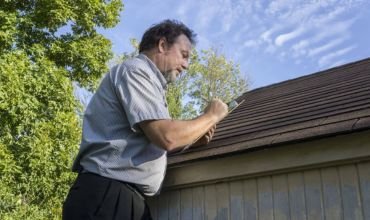Removing a Rood Deck might sound like a daunting task, but with the right approach, it is super easy and safe to tackle. Whether you want to renovate the old one or are looking to replace an aging deck, understanding the process is the key to a successful project. In this guide, you will get answers to Can you remove existing roof deck from rental property. And the installment of the new one!
Before diving into the process, it is crucial to understand what a roof deck is. You see, A roof Deck is a flat surface above a building’s exterior wall that provides stability and support for the roofing materials. It can be made up of various materials, including plywood, OSB (oriented strand board), or concrete, and it’s typically covered with waterproofing materials and additional roofing layers.

There might be many possible reasons behind Removing the Roof Deck: Some of them include:
Before proceeding with the removal, review the step-by-step process so that you can easily follow it.
Before you start the process, analyze the condition of the deck and look for signs of water damage, rot, or structural issues. If you find it difficult to do it yourself, seek the help of the experts or contact the ManageMyRoof inspection services.
Depending on your locality, there might be different building codes and governing roof regulations. Contact your local building authority to ensure you’re compliant with any necessary permits and safety guidelines.
You’ll need the following tools and materials:
Having a detailed plan and structure can help you save time and prevent mishaps. Lay out the steps you will take, including how you’ll remove the deck, dispose of debris, and address any underlying issues once the deck is removed.

Here’s how you can remove the Existing Roof Deck and what steps you should follow;
Before starting, ensure your safety and that of those near you. Use appropriate safety gear, and if the job requires working at heights, secure a proper ladder and consider using harnesses.
Remove any furniture, plants, or other stuff from the roof area. This will give you a clean space to work and help prevent accidents.
Before you can remove the deck, make sure to remove any roofing materials above it. This could refer to membrane, tile, or shingle roofing. Use a pry bar and utility knife to remove the roofing layers carefully without harming the underlying structure.
Once you remove all the extra material from the roof, you can begin removing the deck.
Once you’ve removed the deck, clean up the debris and dispose of it according to local regulations. Many communities have specific guidelines for disposing of construction materials.

After the deck is removed, inspect the underlying structure for damage or issues that need addressing.
Check the roof joists and support beams for signs of rot or damage. If you find any issues, you may need to replace these components before installing a new deck.
Consider installing a waterproof membrane before laying down a new deck. This will help protect against future water damage and prolong the life of your new roof deck.
3. Ventilation
Ensure that the space beneath the roof deck has proper ventilation. Poor ventilation can lead to moisture buildup and subsequent damage.
After resolving any underlying problems, you can begin building a new roof deck. Pick materials that work for you, whether that means using plywood for a more classic appearance or more sophisticated materials for greater longevity.
Start by laying the new decking, ensuring it’s properly spaced and secured to the joists beneath. Use screws for a more secure hold.
After installing the new deck, you can add your choice of roofing materials, ensuring they are properly sealed and waterproofed.

Conduct a thorough inspection to ensure everything is secure and functioning as intended. This is the time to address any last-minute adjustments or repairs.
Removing the existing Roof Deck from a Rental Property can be quite an undertaking, but with a proper inspection and correct process, it can easily be tackled. Remember always to prioritize safety, and don’t hesitate to seek professional help when needed. A new roof deck may increase the value and lifespan of your property, guaranteeing that it continues to be a secure and appealing place for your tenants, whether you’re updating for aesthetic reasons or taking care of structural issues.
Yes! It is not entirely necessary to remove the old deck before installing a new one. However, make sure that the old deck doesn’t have any damaged highlights.
Before starting any decking work, you must secure consent from the relevant conservation area.
A roof deck can last up to 20 to 30 years, depending on the required maintenance.
The lifetime of the deck and the safety of everyone who uses it depend on its connection to the house. Contractors must fasten the ledger board and deck to your house with a sufficient number of suitable metal fasteners.
If any boards on your roof decking are cracked or rotting, you need to replace the affected piece of wood.
Leave a Reply